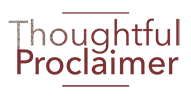Have a SHARP Focus to your Teaching
Whether you teach or preach it is important that you keep the main idea in FOCUS at all times. The main purpose of this website is to encourage and empower you to be a more effective Bible teachers or speaker, so I would like to share with you an acronym for things to add so that you communicate most effectively. Mnemonic devices are not only good for us to use in teaching others, they are also handy devices to have up our sleeve as we prepare a Bible lesson or talk.
In one of the best books I’ve read lately there is a great acronym for speakers. SHARP. I’ll give you the acronym, but you need to read the book. Give it to your college seniors, your co-workers and anyone who you sense has a lot more potential than self-confidence. It is called You’ve God to Be Believed to be Heard: The Complete Book of Speaking in Business and in Life! by Bert Decker. Okay enough of the advertising-I should get a kickback don’t you think?
When you are speaking or teaching you want to help your listeners focus on the point you are making, you want to keep their attention, and you want to make your point memorable. Make your point SHARP:
S-Stories and Examples: Jesus knew the power of story. Sometimes he didn’t even explain the story. That was Jesus. Usually, you and I should let our listeners know what our story has to do with our teaching subject.
H-Humor: You can use jokes but better yet, use your own personal brand of humor. Do you have a dry wit? I often use self-deprecating humor. Decker says that it is “virtually impossible to dislike someone who makes us laugh.” Someone has said: When their mouths are open with laughter slip in the pill of truth.
A-Analogy : Comparisons, contrasts, other things in the same category etc will help make your ideas more memorable or will help others to see or better understand your point.
R-References and Quotes: These should be written down and read. I have been known to misquote a statistic and have to email the entire group with a correction-not good. Quotes and references and validity to your statements. They help you to be believable. They can be quotes, facts, data, statistics articles or quotes from broadcasts. Personally, I would add, the shorter the better. If you want to give us a two page quote, then it is not a quote so much as you reading to us which is usually boring. Instead, give a one or two sentence quote and tell us the rest in your own words.
P-Pictures and Visual Aids: Visual material can be used to REINFORCE what you are saying. Anything that will add interest and is on point is good. People remember better what they both see and hear. “Presentations using visual aids are 43% more persuasive than unaided presentations.”-not sure what type of presentations this statistic speaks to but it is good to note. A picture is worth a thousand words. However, I have found that Power Points can distract my audience so I use them sparingly. A good rule of thumb is to use a blank black slide when you want your audience to look at you. I am learning this. A quick note on Slides, less is more (less writing, fewer slides, less information), use high contrast (black, white, red), bigger writing is better (36 font).
There is another acronym I’ll throw in for free from my Doctor of Ministry residency at Gordon Conwell Theological Seminary: Take the truth to all SEATS: use Story, Example, Analogy, Testimony, and Self-Disclosure. The addition of Testimony means that you can either find a testimony from someone else or actually have someone else give a testimony on your topic or application or point. Self-disclosure can be powerful but is tricky. You must not go so far as to cause your listeners to loose respect for you. Self-disclosure should not be something that will fuel gossip for weeks. Self-disclosure is usually most effective if it is very humble.


